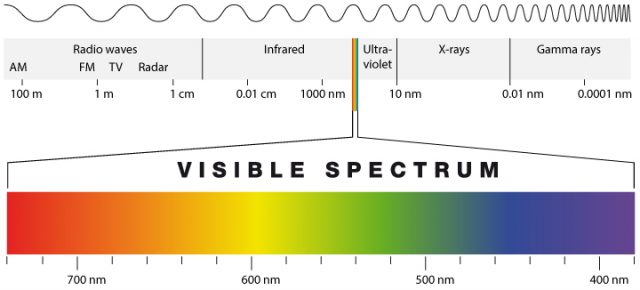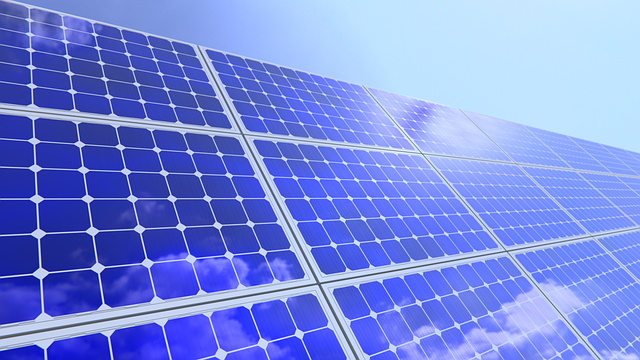The Revolutionary New Solar Cell Capture All Wavelengths of Solar Spectrum
If you had been following my blog you may have realized I am somewhat a little obsessed with the alternative source of energy. Well, the reason is not farfetched, we need energy and where I am, the energy supply is so low that it is almost nonexistent. Ironically, the alternative supply environment is so good.
For the past four decades, the efficiency of the solar panel had been pegged at 25%. That means that the solar cells could only convert about a quarter of the solar energy that is exposed to it to electricity. That is not a very efficient but that is about to change.
The new solar panels developed by the George Washington University absorbs virtually all frequency of the sunlight. That makes for an efficiency of 44.5% which is near twice the efficiency of the solar panels in use now. This may not seem groundbreaking, not until we compare photosynthesis in plants which is 3 to 6% efficient. The plant is only able to convert between 3 to 6% of solar energy into biomass, with this efficiency in place, the plant was able to conquer the world. Now compare this to this newfound efficiency and you would realize that it is a tremendous breakthrough.
Source
Using materials from antimonide (GaSb) substrates used in making photodetectors and infrared lasers, are stacked with the conventional solar cell using a high precision technique called transfer printing. This gives the special cell ability to capture more of the sunlight that falls to earth (which ranges from wavelengths of 250 nm to 2500 nm). At the moment, this type of solar cell is still very expensive. But as more research and development take place the cost would go down.
How Did They Do It?
The new cell has a series of cells that capture different types of light.
Remember the high school mnemonics ROYGBIV for the color spectrums of light? ROYGBIV stands for Red, Orange, Yellow, Green, Blue, Indigo and Violet and they are arranged in order of decreasing wavelengths: red is about 650 nm and violet about 400 nm.

Source: Various light wavelength
Imagine that the solar cell is like a sieve with different sizes of holes to allow sand of different aggregates to pass through. Let us assume the sieve with the biggest hole capture coarsest sand (Red light). The next has even smaller holes to capture even yet finer sand (Green light).This continued till the finest sieve available have captured the finest of the finest sand (Violet light). This continues into the invisible infrared light spectrum.By now all "sands" is extracted. Now we have enough solar power captured.
Each stacked layer is used to absorb a specific wavelength of light while allowing others to pass through to be harvested further down.
Blue Day

Source: Conventional blue-colored solar panels
If you have run into a lot of solar installation chances are you would realize they are mostly blue in color. But we all know that black is a bad reflector of light and will do the opposite; absorb. Since we need to get enough of the sunlight why are we favoring blue over black? It is all about the cost. Blue-colored solar panels are cheaper and black are more efficient and costlier.
But even the black-colored solar panels are no match for this new revolutionary solar panels.
This is simply because 50% of the light that gets to earth is infrared light, and most solar panels work exclusively in the visible spectrum.
And if you put a Fresnel lens on the top of your triple junction cell you will get even more electricity, but you can burn it !
22 % yield is enough to provide us with 35 % of our energy needs.
https://steemit.com/wind/@chrisaiki/the-perfect-mix-for-100-renewable-energy
Fresher lens use as a solar concentrator has its advantages and of course disadvantages like getting things burned as you rightly mentioned.
Well explained in simple layman terms. I am glad renewables are becoming main stream now.
Renewable is gradually going mainstream in societies where it was normally looked as the exclusive preserve of the nerds/rich. Thank you.
When do you think this new technology will reach widespread use in commercially available PV panels?
From the various reports I've seen so far no estimated date of that. But since they've got a working copy and not just theories, I guess it'd be sooner than later. With as much sun as we have here, that would be a dream come true for us.
Is PV technology being widely adopted in Nigeria now?
Yes, it's picking on. I even wrote an article on one here
https://steemit.com/technology/@greenrun/solar-power-as-an-alternative-source-of-power-in-africa-some-pictures-of-a-friend-s-installation-which-he-did-this-past-weekend
I have always wondered why blue was used in making solar panels here in Nigeria.
Thanks for the precise explanation, i learnt a lot.
You just got a follow
Glad you found it useful. Thanks for reading and commenting.
Well explanation, keep it dude
Thanks.
I love light. Defintely most people would go for the cheaper model. Light is very much available here though.
Lucky you. I wish everyone does have as much power as you.
I always wish same too. An sorry for your power issue.
We are getting used to it.
While the antiqueted solar panels are yet to gain traction in Nigeria, one can only but imagine when this new improved solar panels will be used in the country
Nigerians embrace technology in a non-linear way. They may not know what it is now, but once someone have gotten it, it'd explode and everyone would want one. Be awesome. Steem it